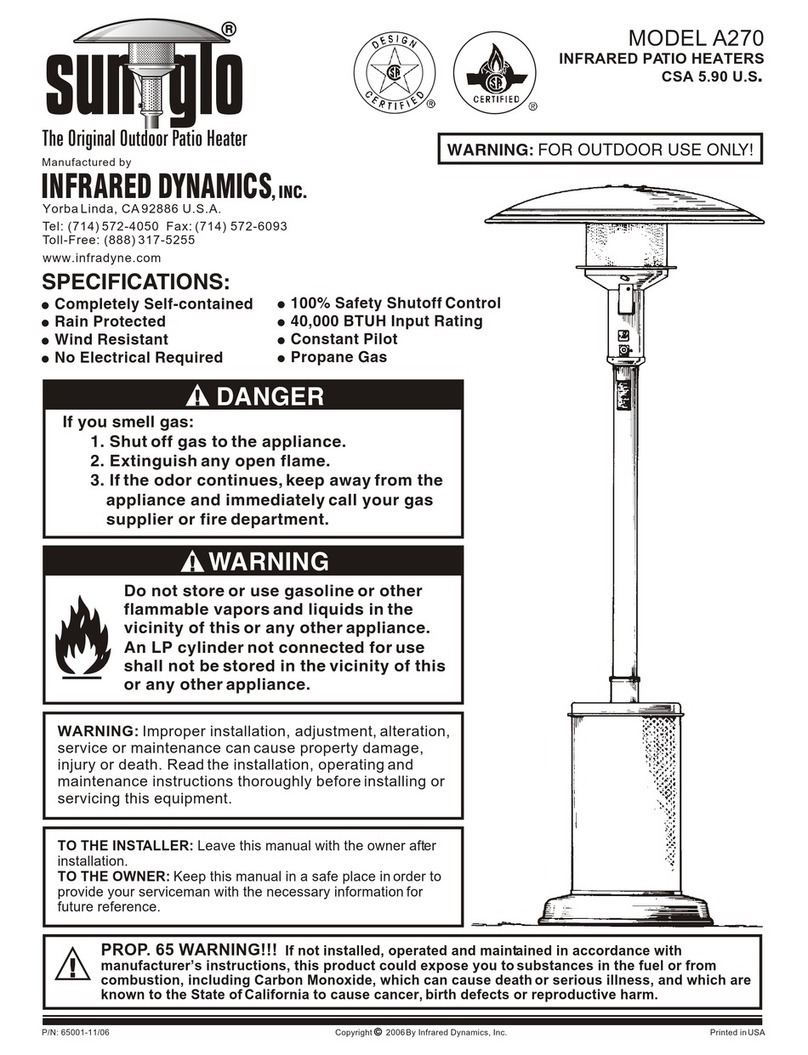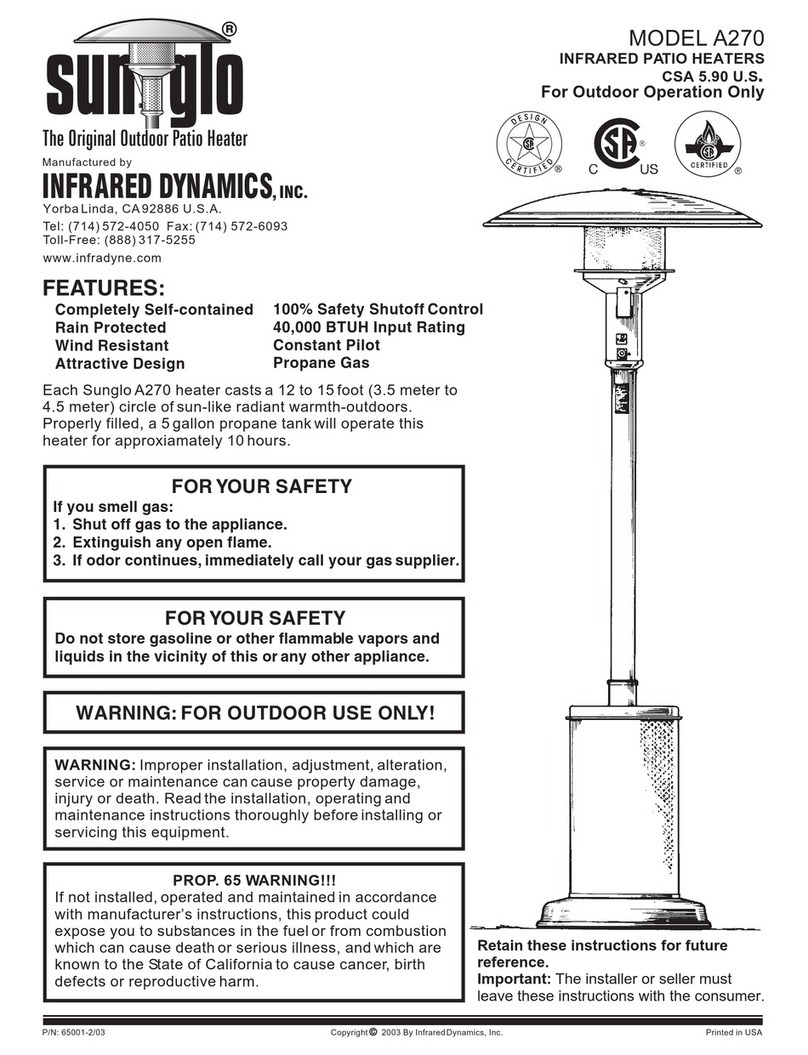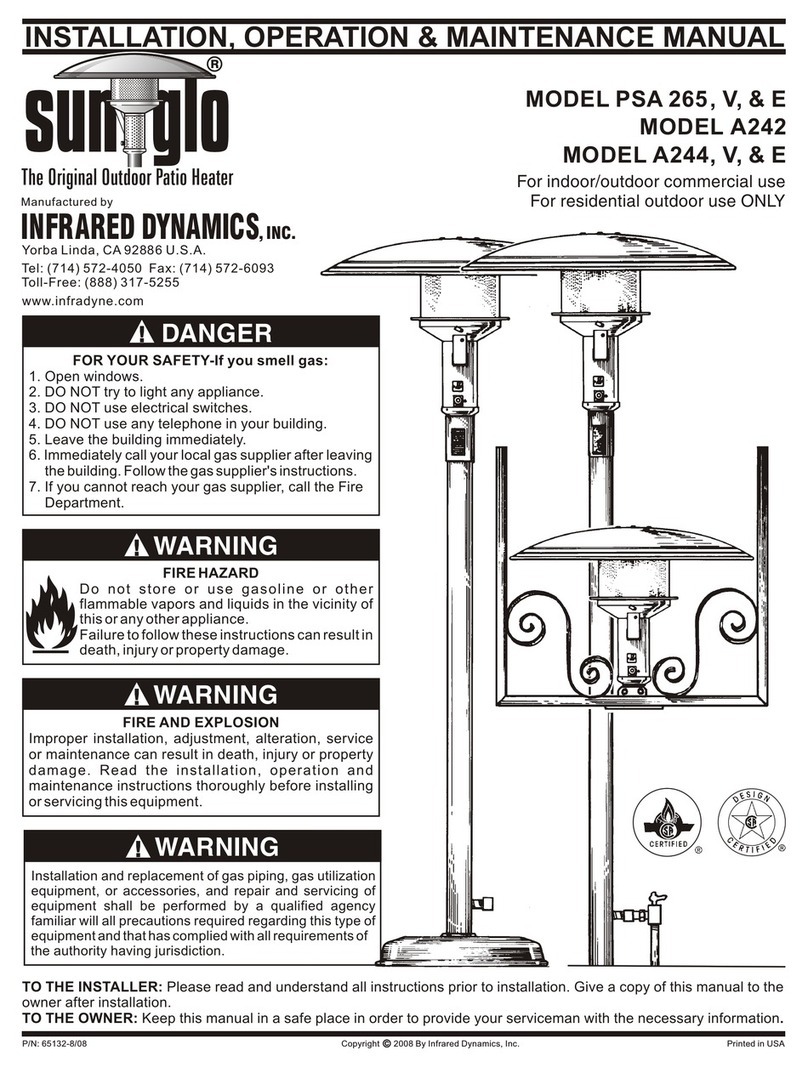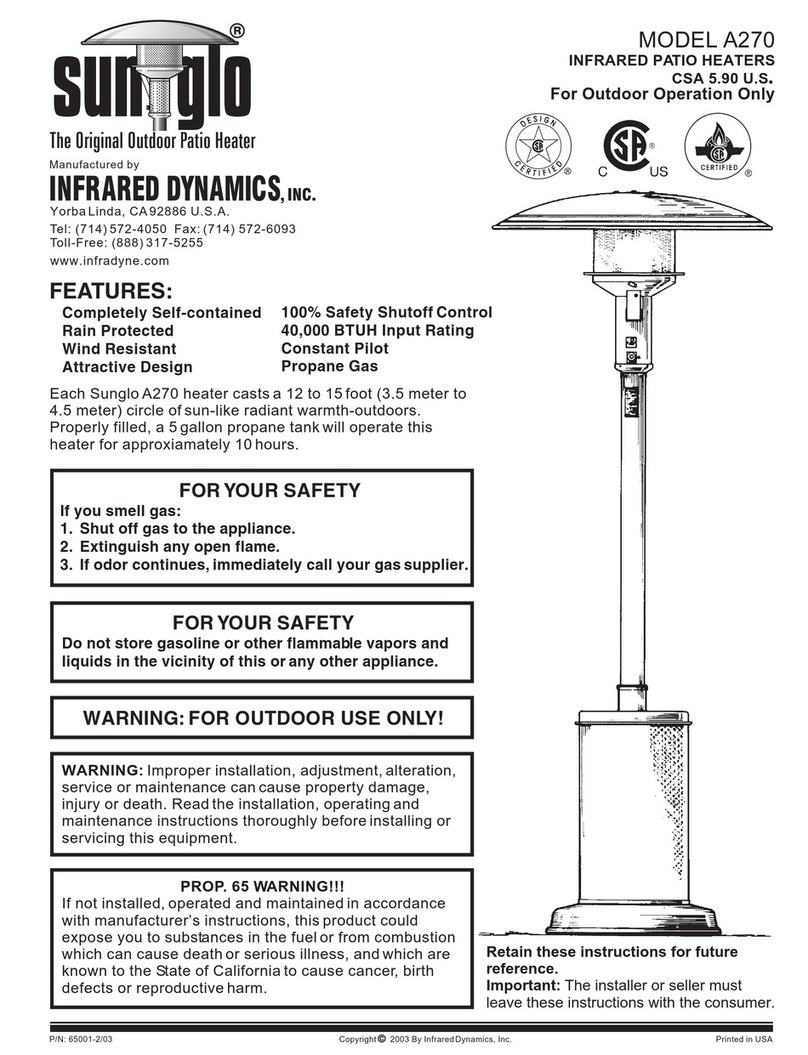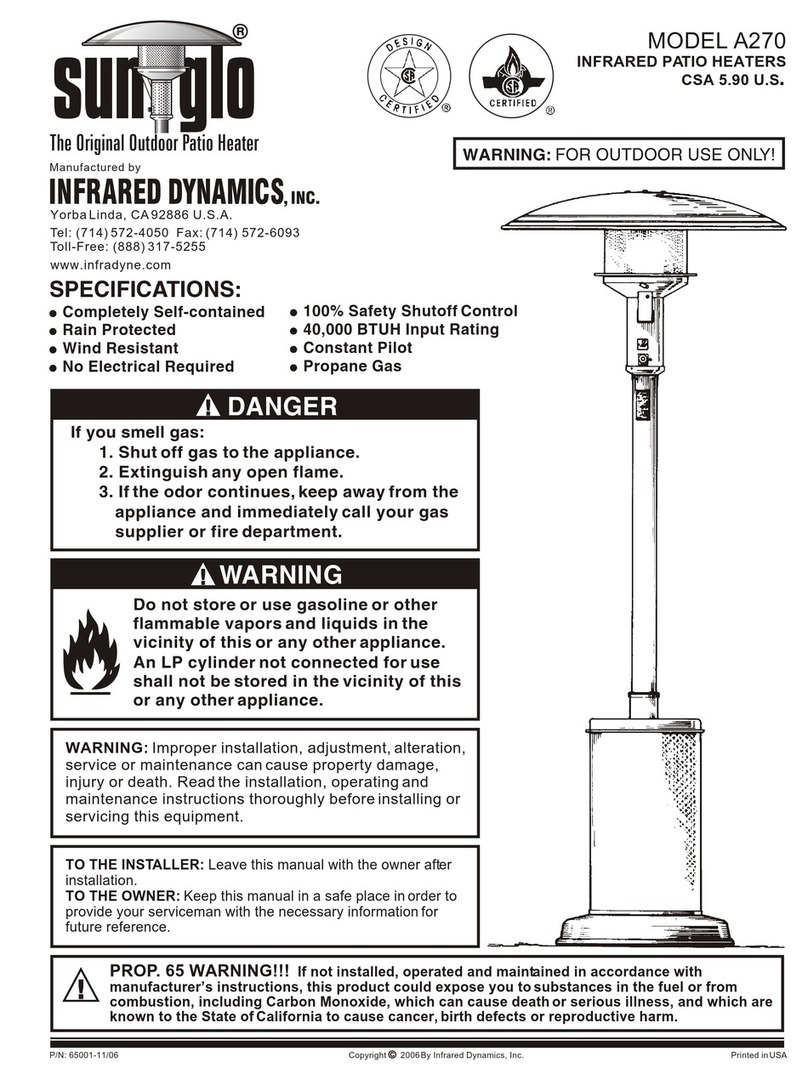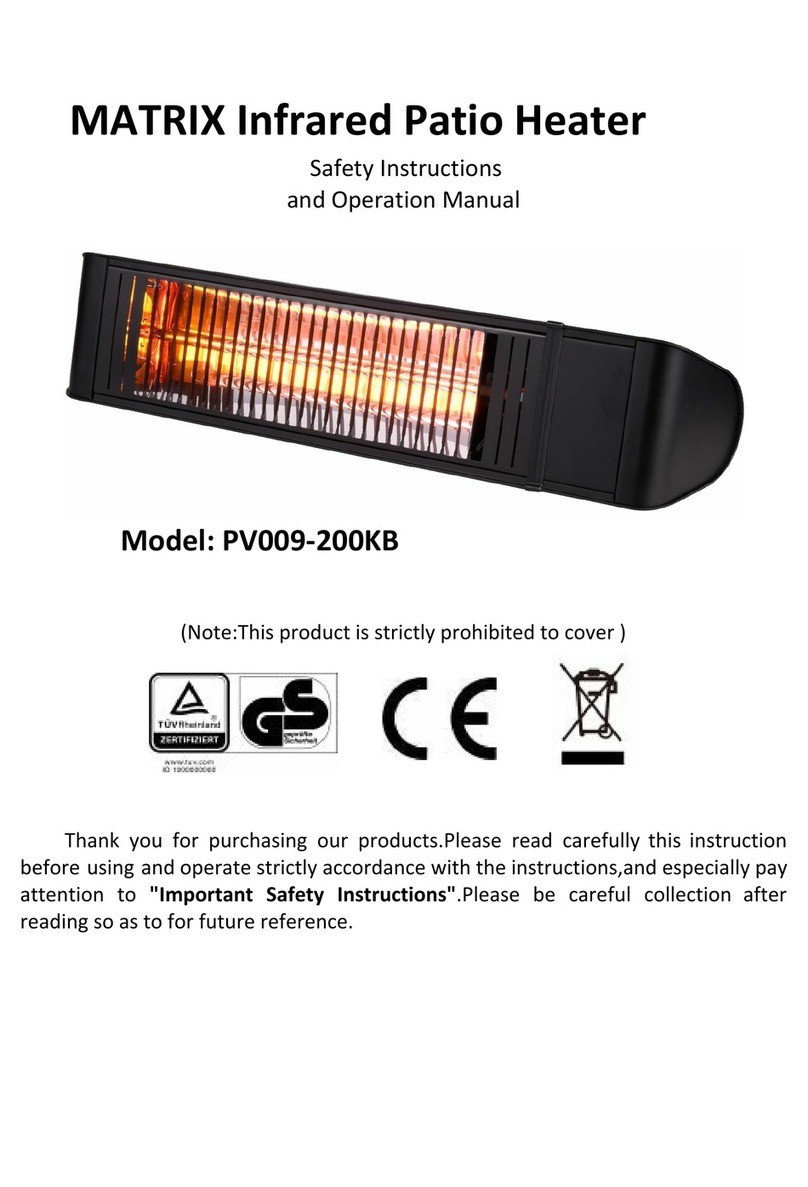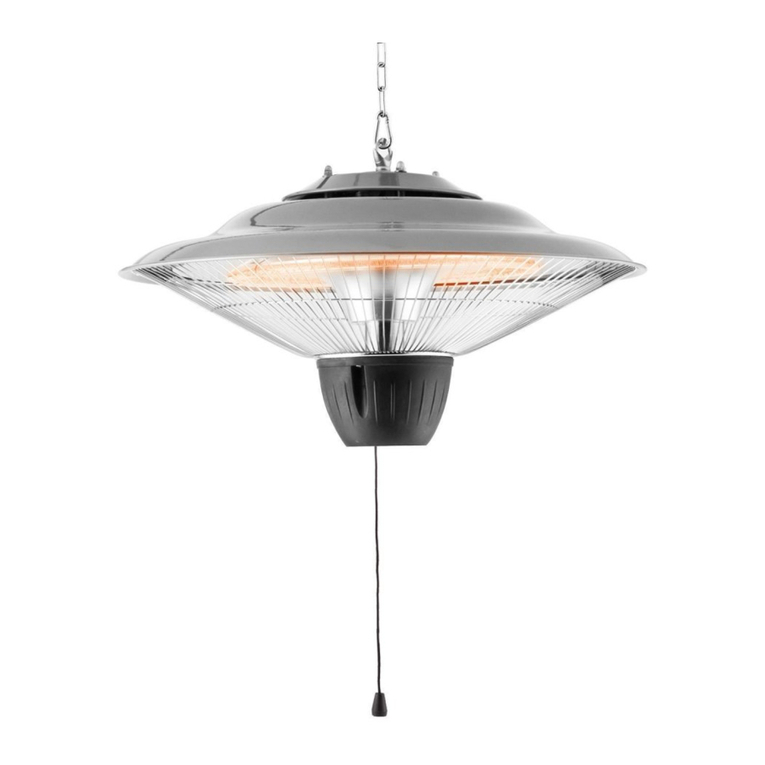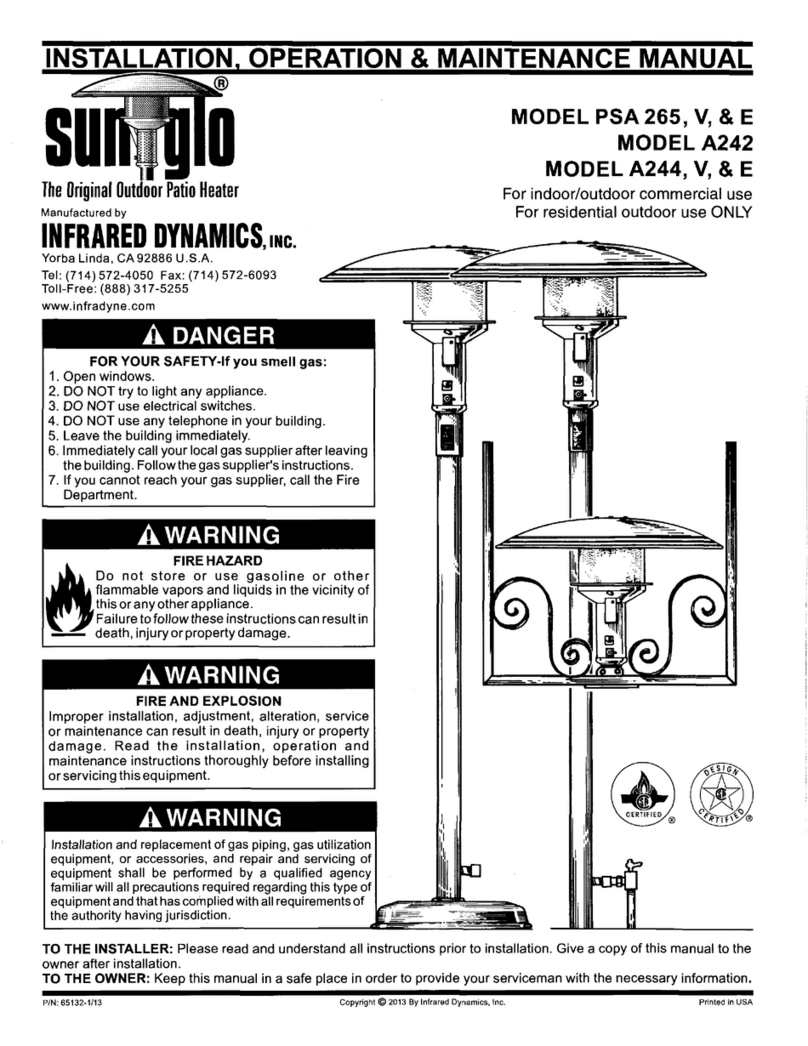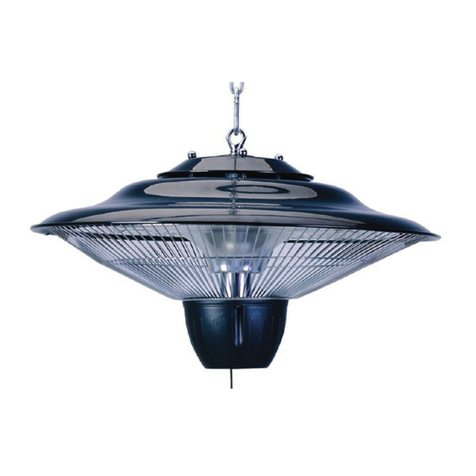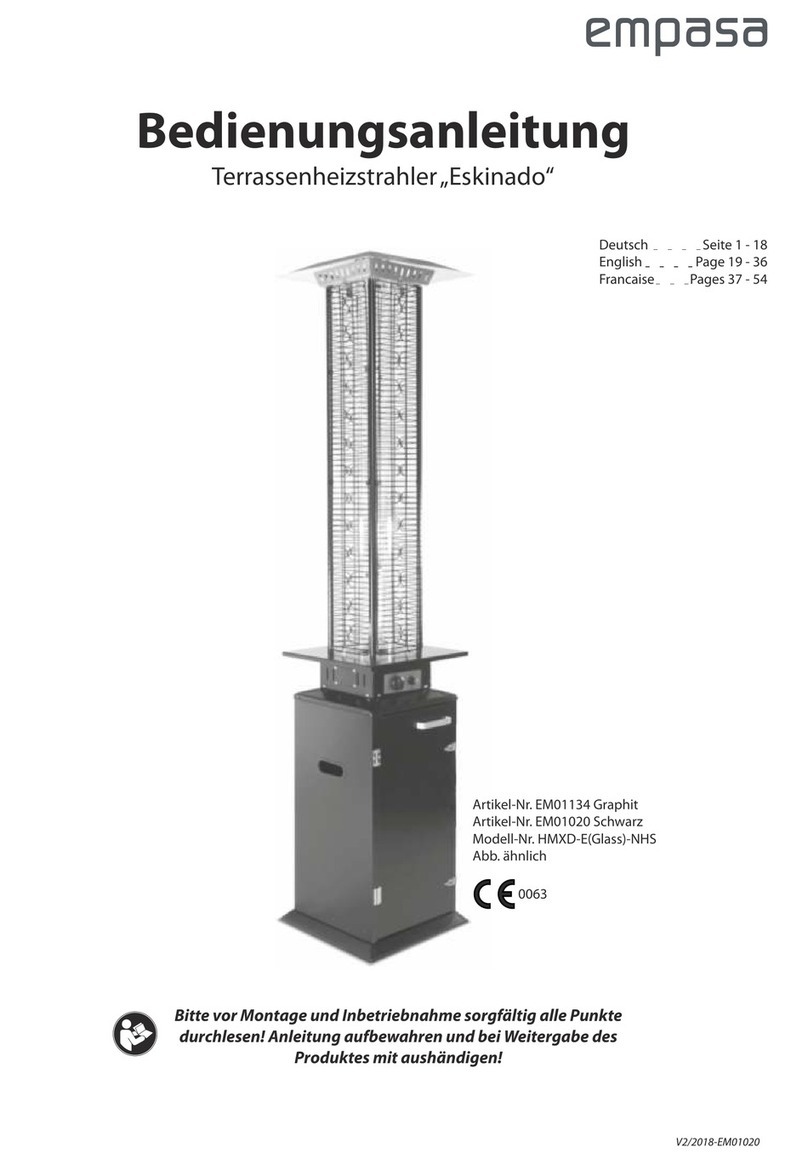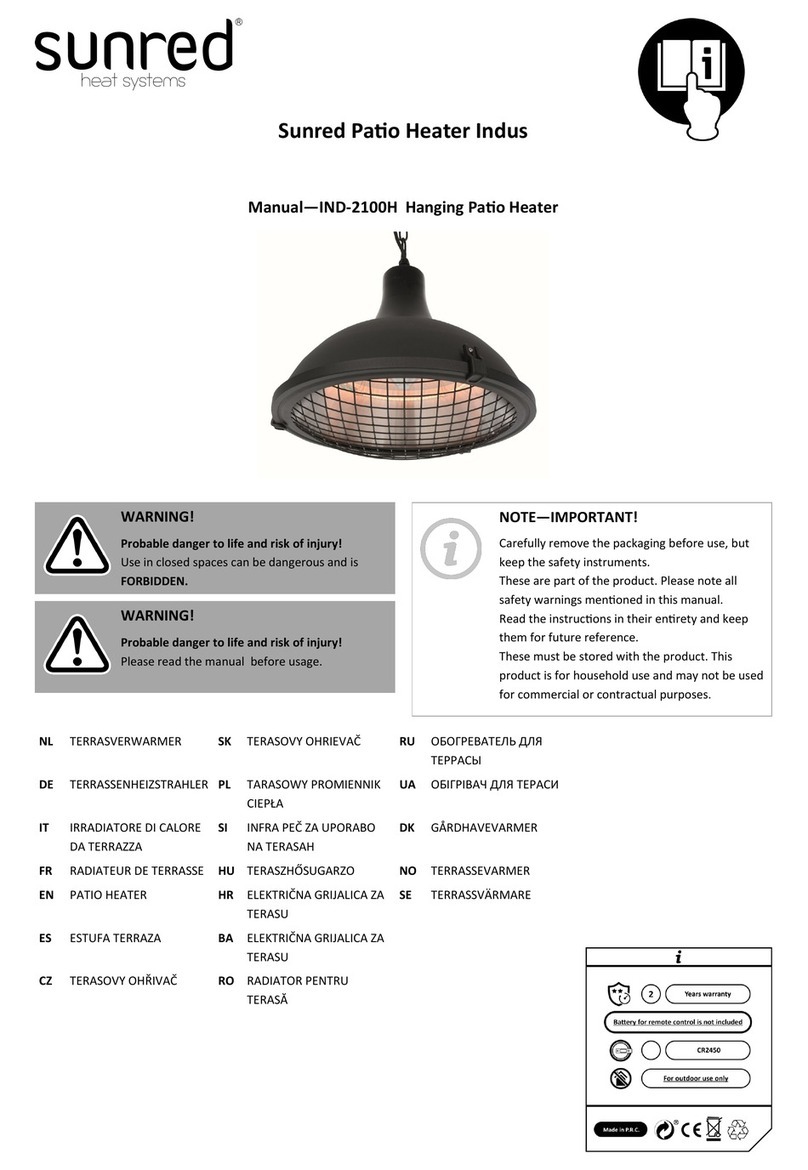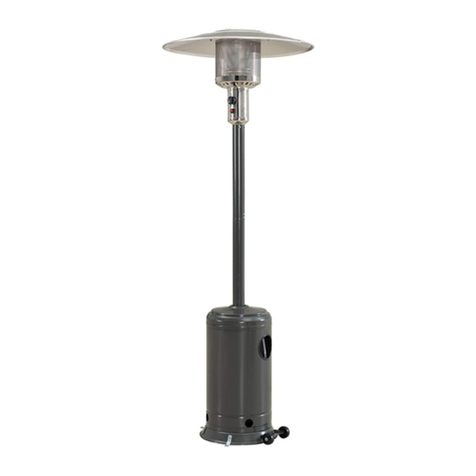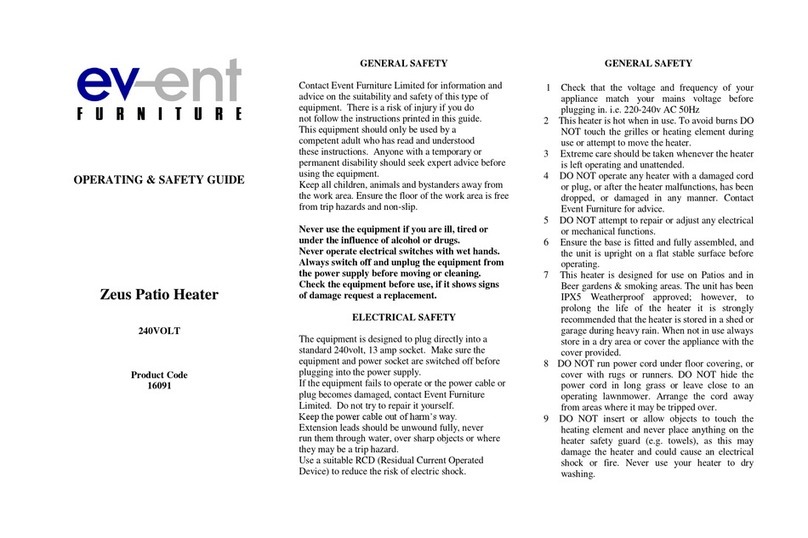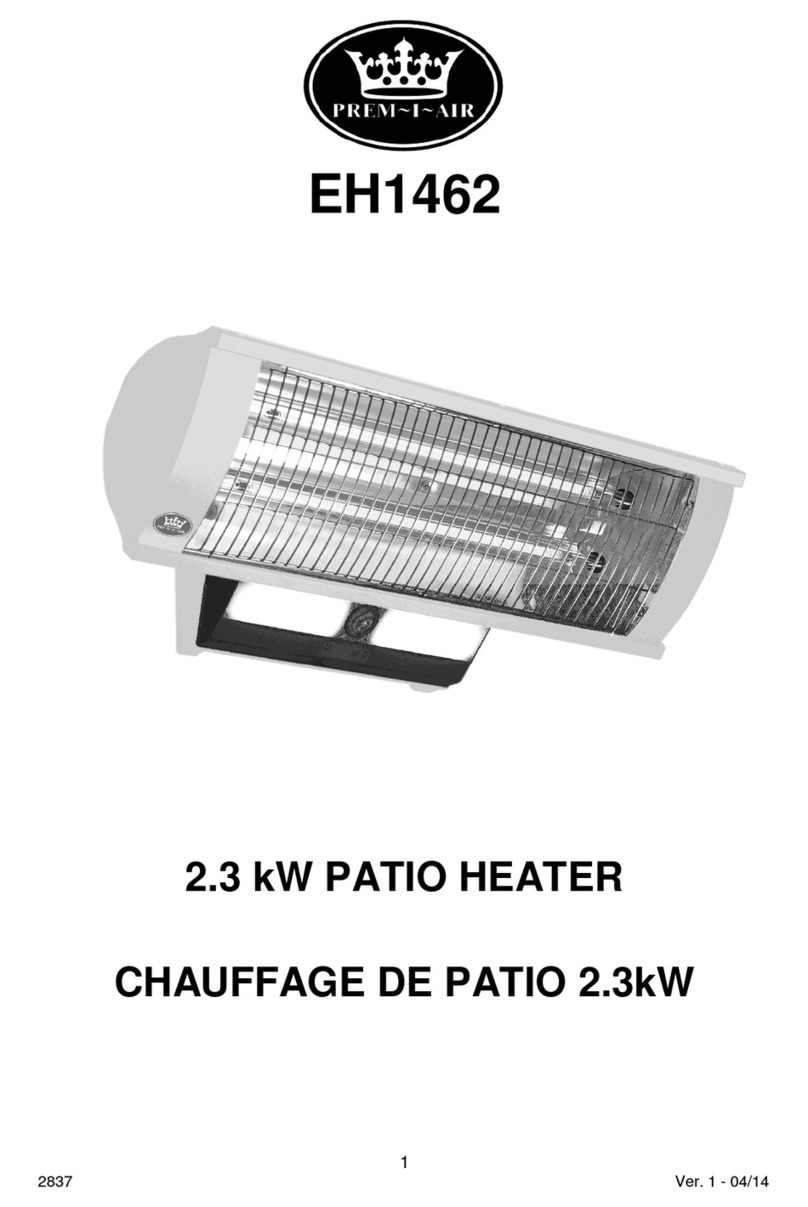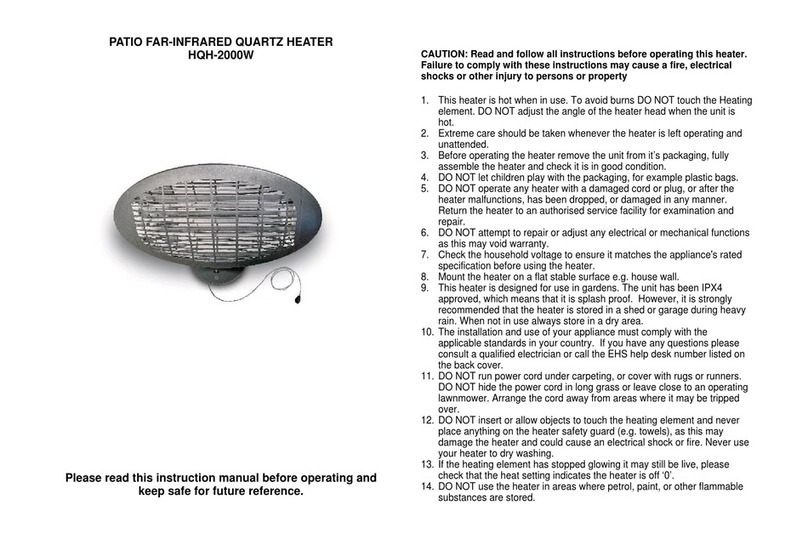
Installation, Operation and Maintenance Instructions for the
Sunglo Model A270 Gas-fired Patio Heater
INSTALLATION
Important Safety Rules:
1.
Children and adults should be alert to high
surface temperature
of
areas above the post
when operating this heater.
2.
Children should be carefully supervised when
they are
in
the area
of
the heater.
3.
NEVER
hang anything including clothes or other
flammable items on the heater.
4. DO NOT operate this heater unless it is fully
assembled with reflector in place.
5.
Installation and repair should be done by a
qualified service person. The heater should
be
inspected before use and at least annually by a
qualified service person. More frequent cleaning
may be required as necessary. It is imperative
that control compartment, burners and circulating
air passages
of
the heater be kept clean.
Prior to assembling your Model A270 propane
heater, the following must be reviewed.
Compliance with the following should yield
satisfactory heater operation. These instructions
should be retained for future reference. The
installation must conform with local codes
or
local
authority having jurisdictions.
1.
The Model A270 gas-fired infrared patio heater
is intended for heating residential and non
residential areas. When the appliance is
connected to a fixed piping system, the
installation must conform with local codes or,
in
the absence
of
local codes, with the National
Fuel Gas Code, ANSI 2223.2/NFPA54, Natural
Gas and Propane Installation Code, CSA
8149.1
or
Propane Storage and Handling
Code, 8149.2.
2.
This Appliance shall be used only
in
a well-
ventilated space and shall not be used in a
building, garage
or
any other enclosed area.
This appliance may be installed
in
a shelter no
more inclusive than:
a.
With walls on all sides but no overhead
cover.
b.
Within a partial enclosure which includes an
overhead cover but no more than two side
walls. These side walls may be parallel, as
in
a breezeway,
or
at right angels to each other.
c.
Within a partial enclosure which includes an
overhead cover and three side walls as long
as 30%
of
the horizontal periphery is
permanently open.
2
3.
Proper clearance from combustible materials
must be maintained at all times. The minimum
clearances are as follows:
Minimum Clearance from Combustibles
Side 24"
(61
cm)
Rear 24"
(61
cm)
Ceiling 18" (46 cm)
Below 84" (84 cm)
Combustible materials are considered to
be
wood, compressed paper, plant fibers, plastic,
Plexiglas or other materials capable
of
being
ignited and burned. Such materials shall be
considered combustible even though flame-
proofed, fire-retardant treated
or
plastered.
Additional clearance may be required for glass,
painted surfaces and other materials which
may be damaged by radiant
or
convection heat.
4. Heaters must be placed on a level and
adequate footing and be readily accessible.
The heater may be be permanently attached to
the floor utilizing the Floor Clamp Kit (Part No.
27020) available from the manufacturer.
5.
The gas manifold supply pressure must be
regulated at
11"
water column utilizing a U/L
listed regulator. Any replacement regulator
must be U/L listed. The minimum inlet pressure
to the regulator from the tank is 5 PSI and
maximum pressure is 150 PSI.
6.
The heater must be inspected before each use,
and at least annually by a qualified service
person.
a.
The appliance area must be kept clear and
free
of
combustible materials, gasoline and
other flammable vapors and liquids.
b.
Gas jets and burner must be kept clear
of
dirt and cobwebs. Flow
of
combustion and
ventilation air through the perforated portions
of
the heater must not be obstructed.
c.
All gas connections should be checked for
leaks utilizing a soap solution. Neveruse a
flame for this purpose.
d. The flame pattern at the emitter grid should
be visually checked whenever heater is
operated (see figure 1.). Ifflames extend
more than ½ inch beyond surface
of
the
emitter grid or black soot is accumulating on
the emitter grid
or
reflector, the heater should
be turned
off
immediately. The heater should
not be operated again until repairs are made.
e. Any cleaning agent used on the heater
should be
of
a non-combustible and non-
corrosive nature.

